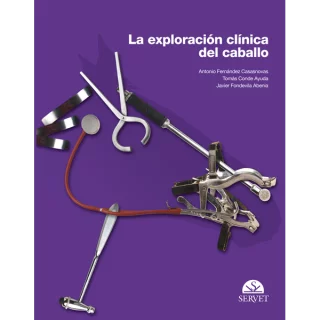Envío gratuito en compras superiores a 19€ (Península y Baleares)
Through 50 questions and their corresponding answers, this book offers an entirely practical review of the endoparasites and ectoparasites which affect the equine species as well as the methods of controlling them. This book, organised into chapters divided by organ, presents real-life situations that deal with parasites of the horse in professional veterinary practice. Its images and diagrams – around 300 altogether – render it something of a parasitology atlas.
I. Q & A Endoparasites of the digestive system
Introduction
1. What are gasterophilids?
2. How are gasterophilids transmitted?
3. What are the effects of Gasterophilus?
4. How can we tell if a horse is parasitised by gasterophilids?
5. How is Strongyloides transmitted?
6. How do foals become infected with Parascaris if the adults are resistant and do not shed eggs?
7. What are the consequences of Parascaris infection?
8. Why is it so difficult to eliminate Parascaris from a farm?
9. How are Parascaris transmitted?
10. Are any Parascaris species resistant to anthelmintics?
11. Can cestodes cause the death of their host?
12. How is the risk of cestodiasis avoided?
13. How important a disease is strongyloidiasis in equids?
14. What are the most pathogenic strongyles?
15. Can Strongylus vulgaris larvae be observed in the mesenteric arteries?
16. Which nematode migrates via the right parietal peritoneum?
17. How and when are equids infected by strongyle larvae?
18. How does thromboembolic colic occur?
19. What is exercise-related lameness of parasitic origin?
20. What pathology do cyathostomins cause?
21. Are any equine strongyles resistant to anthelmintics?
22. How is oxyuriasis diagnosed?
23. Can more than one pinworm species affect equids?
24. Is Fasciola commonly found in equids?
25. Which parasites are implicated in diarrhoea of newborn animals?
II. Q & A Endoparasites of the respiratory system
Introduction
26. How is dictyocaulosis diagnosed in a horse?
27. Why do donkeys transmit dictyocaulosis to horses?
28. Why are so many eosinophils produced in cases of parasitic bronchitis?
29. What fly larvae can cause catarrhal processes in horses?
30. What parasite can cause laryngeal stridor?
III. Q & A Systemic endoparasites
Introduction
31. What is the best method to diagnose piroplasmosis?
32. Can piroplasms cause death?
33. Why is piroplasmosis not fatal in horses in endemic areas?
34. Why do animals infected by Theileria equi continue to carry the disease?
35. Are hydatid cysts of horses the same as those found in other species?
36. Can horses transmit trichinellosis?
37. What is dourine?
38. Can horses transmit toxoplasmosis?
IV. Q & A Parasitic infections of the skin
Introduction
39. What types of mites parasitise equids?
40. Are mites easily visualised?
41. Can rabbits transmit mange to horses?
42. How is leg mange diagnosed?
43. Are males required in order for lice to multiply?
44. Why are ticks so abundant?
45. What diseases do ticks transmit?
46. Are ticks found during winter?
47. Can severe allergic reactions be caused by mosquitoes?
48. What diseases do flies and mosquitoes transmit?
49. Why does the forest fly not fly?
50. Which parasite impairs covering in stallions?
- Autor/es Aranzazu Meana Mañes, Francisco A. Rojo Vázquez
- Fecha de edición septiembre 2018
- Nº Páginas 176
- Encuadernación Tapa dura
- Tamaño 22 X 28
- Idioma Inglés












